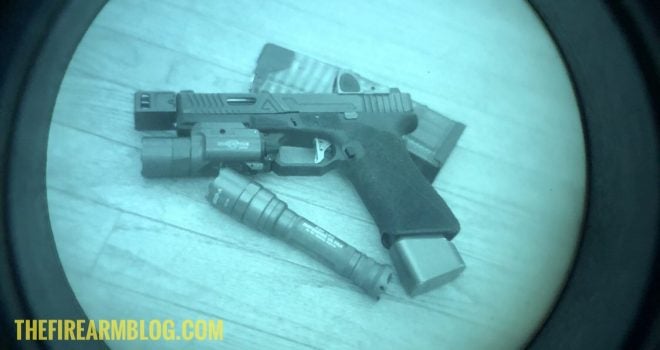What restrictions and regulations are placed on the ownership and use of night vision equipment? This question finds few real answers, most of which are often foggy at best. The primary regulations that effect night vision observation devices (NODS) and Light Amplification by Stimulated Emission of Radiation (LASERs) are International Traffic in Arms Regulations (ITAR) and Export Administration Regulations (EAR). Both regulations control the laws regarding, manufacturing, sales and distribution of applicable technology. Most of the “laws” about sales are instead manufacturers’ policies as opposed to legal requirements.
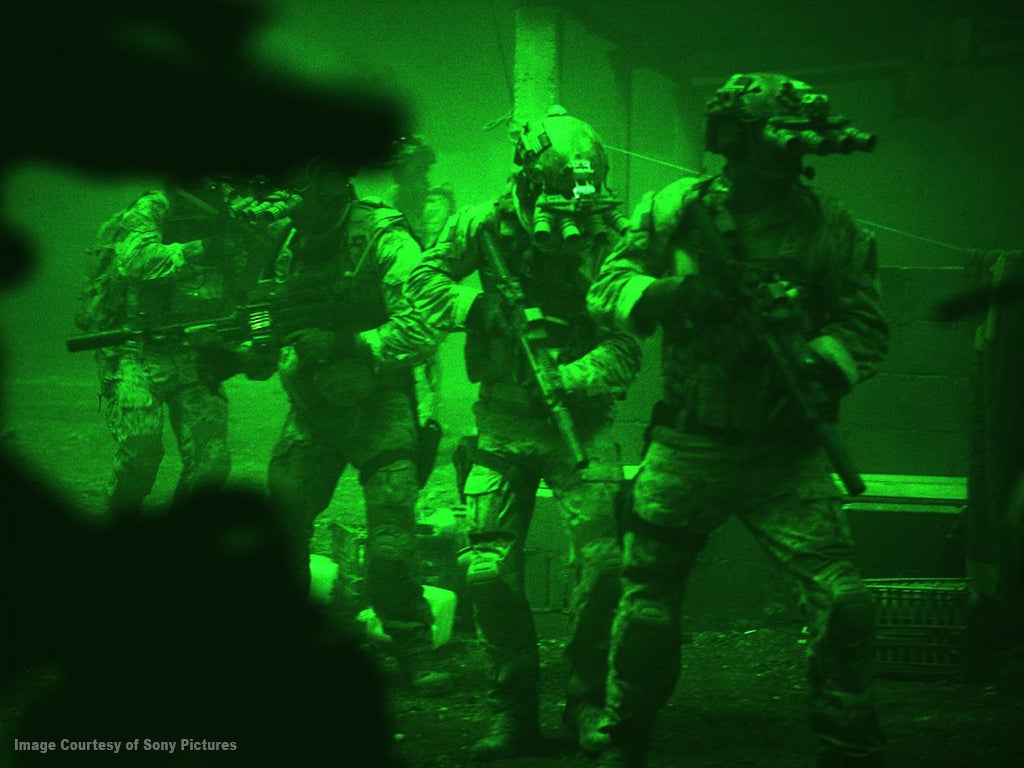
Source: https://tnvc.com/wp-content/shopp_images/Zero-Dark-Thirty1-2.jpg
ITAR
ITAR particularly regulates defense technology for import and export of any defense-related articles and services on the United States Munitions List (USML). Without going into any further detail, NODs and lasers are not allowed to be taken out of the country even for travel. This includes civilians and law enforcement personnel. ITAR also prohibits any non-US citizen from looking through Gen 3 night vision or having access to operator’s manuals and documentation. Non-citizens are prohibited from possessing lasers and illuminators as well because they fall under the same regulations.
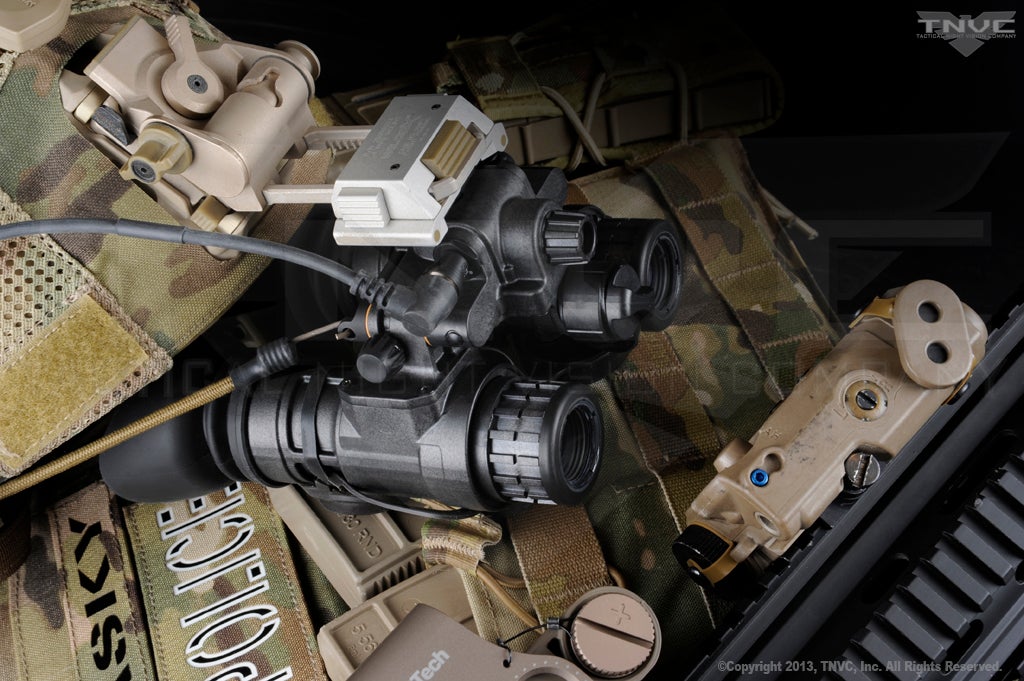
Source: https://tnvc.com/shop/l-3-anpvs-31-bnvd/
What Units Are Illegal to Own?
All Night Vision Image Intensifiers and Thermal Imaging Devices are legal for US civilians to own with no government restrictions. The manufacturers place restrictions on units as a matter of company policy. Often these policies are based on US Department of Defense due to their incredible demand for the units and the inability to meet these needs and the demands of the civilian market.
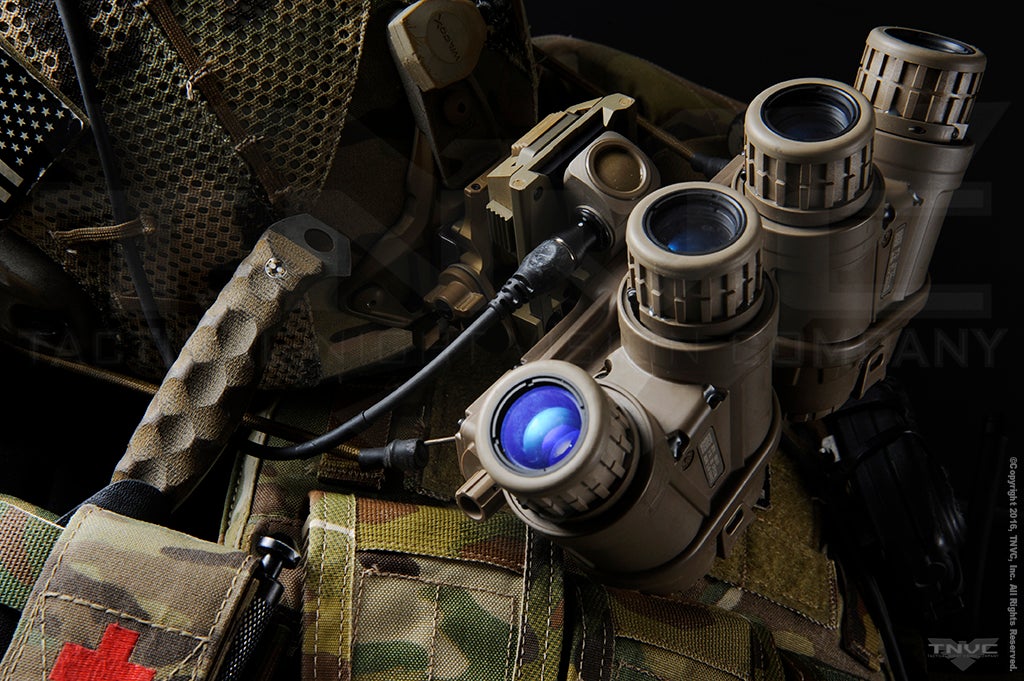
Some higher end units like the GPNVG can retail over $43,000. This is an example of a unit restricted to government and LE sales by the manufacturer, but the price-point prevents many from purchase as well.
Source: https://tnvc.com/shop/l-3-gpnvg-18-dovetail-mount/
IR Lasers
Heavier regulations exist for IR lasers and are regulated by the Food and Drug Administration (FDA). Standard military IR lasers fall under the Class IIIb or IEC Class 3B classifications.
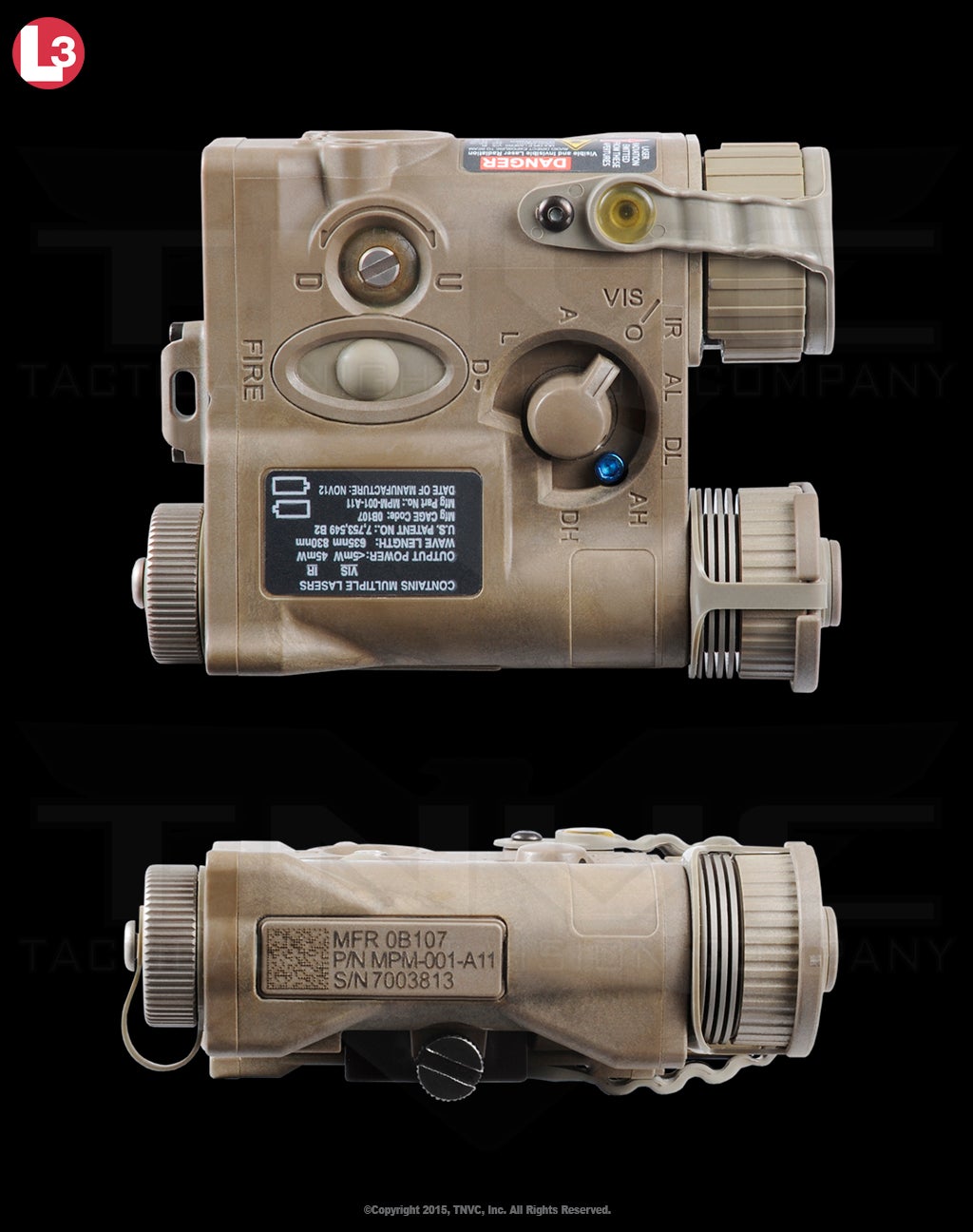
Here is a PEQ16B containing a Class 3 laser. The blue screw acts as a safety to prevent accidental use of settings that are not eye safe.
These lasers emit beams with 5 to 500 mW of output power. When the human eye interacts with visible light it naturally closes when exposed to bright light. Since the human eye cannot detect the IR spectrum without aid, it does not close the eye lid or turn away for protection. This exposure can result in significant damage up to permanent blindness. For this reason, direct sale to civilians is restricted.
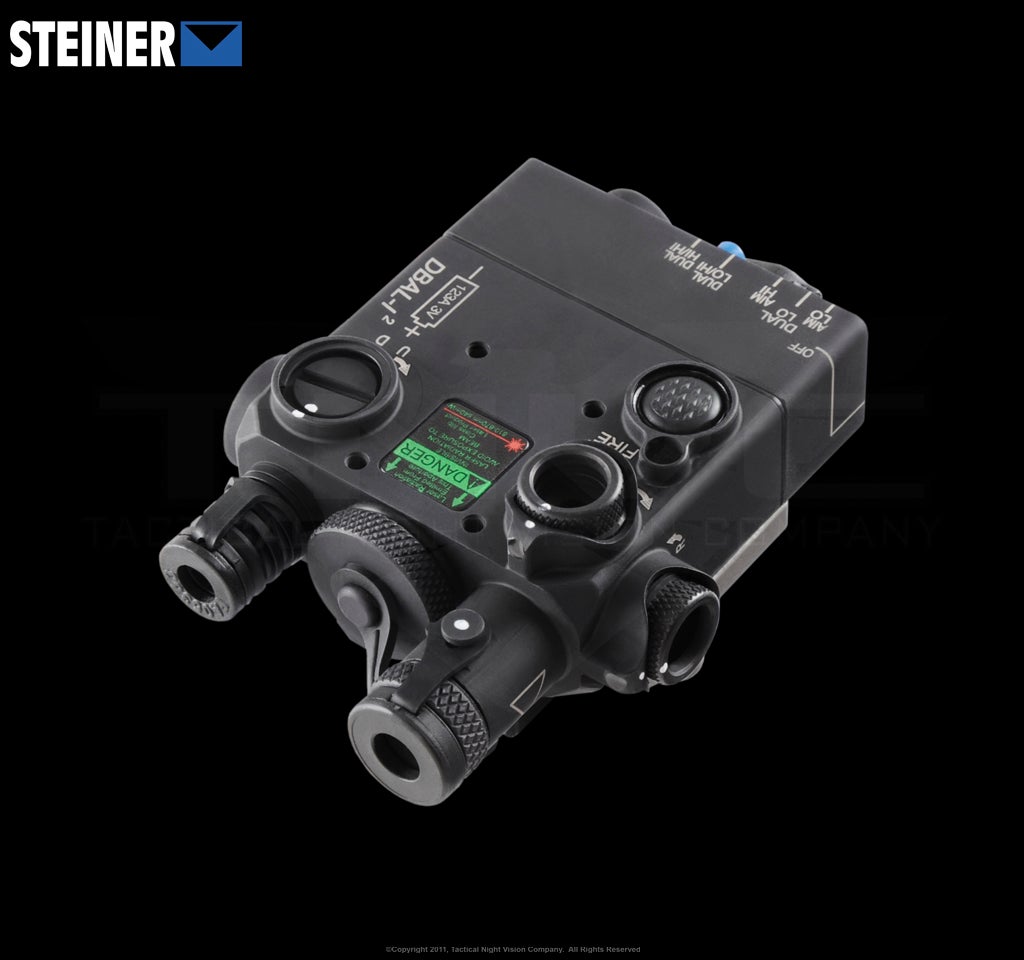
Shown is a DBAL I2H.
Source: https://tnvc.com/shop/ldi-dbal-i2-high-power-laser/
However, this class of lasers can be purchased second hand and there is not a restriction to civilian ownership or possession. For those wanting to possess a Class 3 laser they should be aware that not all, but many Class 3 lasers on the market have been obtained illegally and it is illegal to possess stolen property. This is often obvious to observe due to the removal of a serial number. Also it is important to ensure safe handling measures are followed to prevent ocular damage. Even individual military and LEO are not able to purchase Class 3 lasers directly. For government or law enforcement departments to purchase Class 3 lasers, the Chief Law Enforcement Officer or CO must place the order. This is forwarded to the manufacturer, who then drop ships directly to the unit or department.
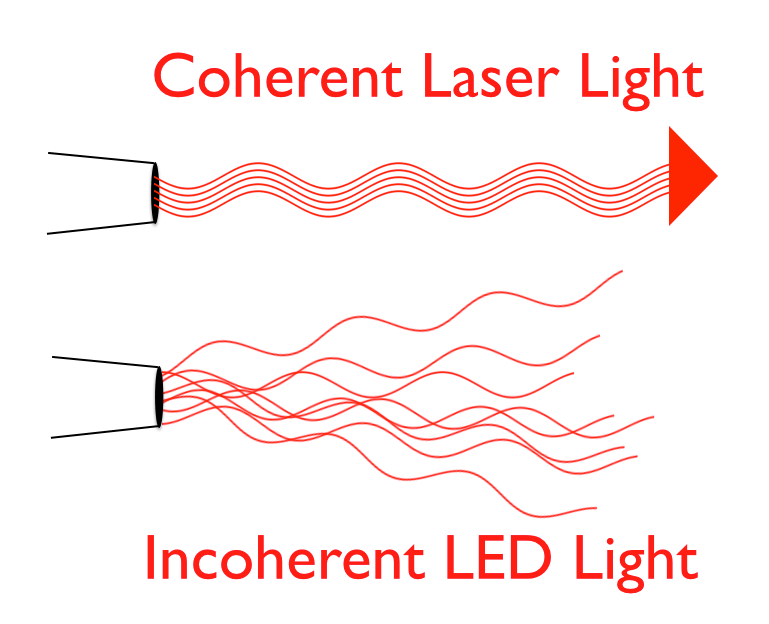
This is an example of the difference in coherence between a laser and a standard LED light.
Source: https://www.miridiatech.com/news/2014/02/laser-vs-led-whats-the-difference/
IR illuminators are similar but different. As stated before a laser is actually an acronym for light amplification by stimulated emission of radiation. A laser’s directionality and coherence are what cause eye damage. In lay mans terms, this means that the beam is very concentrated and little energy is lost. All of this energy is focused on a very small focal point. With illuminators, the energy is not focused on a small focal point, but diverges to expand over a larger area. Due to this expanded area, there is not a central high-energy focal point and in return will not cause damage to the eye.
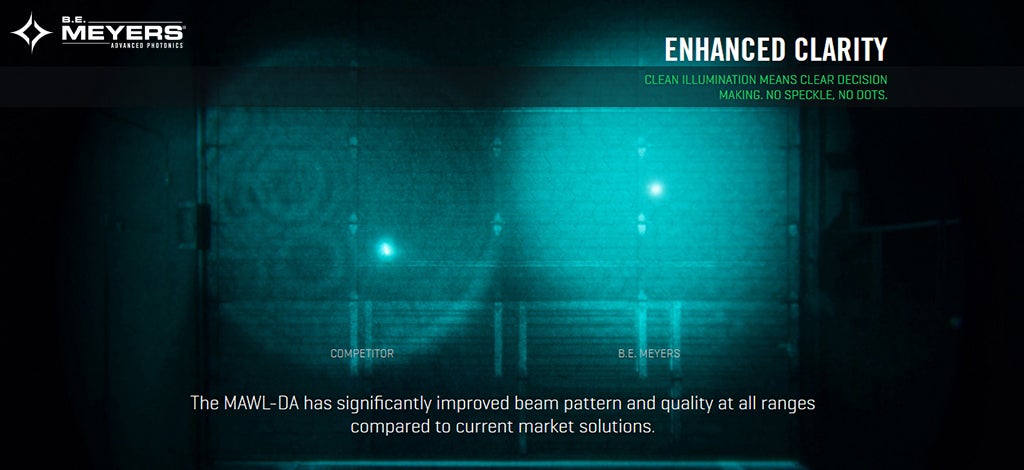
Here is an example of laser and Illuminators. Notice the hot spot in the center is the laser while the illuminator works much like an IR flashlight and is focused over a much wider area. Source: https://tnvc.com/wp-content/shopp_images/MAWL_DA_illum-4.jpg
Civilian lasers are available and are lasers with a max output of .7 mW. At .7 mW and below, the lasers are considered to be eye safe and are classified as a Class 1 laser by the FDA. Many of the standard military laser aiming devices are now being produced with a Class 1 laser instead of a Class III and are available for direct sale to the public. Class 1 lasers are claimed to have a 250 yard range. This is very situation dependent however, and depending on environment and backdrop the visibility of the laser can be improved or impeded.
Reputable Dealers
Obviously night vision is very expensive to get into and you are far better off not having to learn from a bad purchase. Tactical Night Vision Company TNVC is a reputable dealer for NODs and lasers in Class 1 and Class 3. For more difficult to find as well as used equipment Will’s Optics is also a trusted dealer with a specialty for Night Vision gear. Will’s Optics deals in all commercial IR gear plus LEO and contractor equipment traded in for new gear. I have purchased from Will’s Optics and was impressed with the availability of rare equipment and prices.
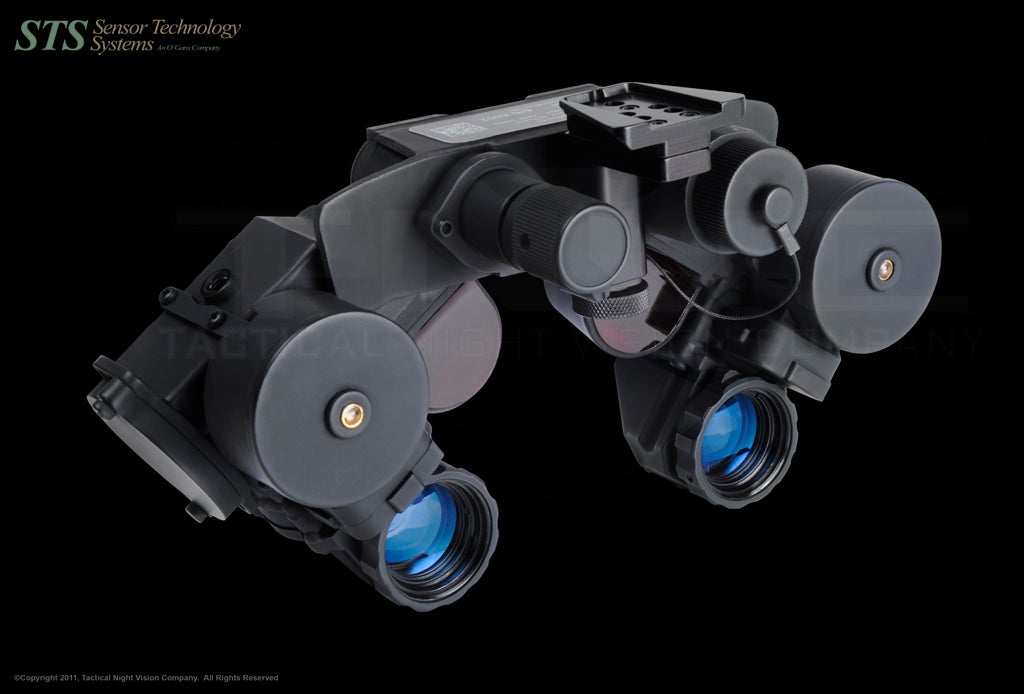
The ANPVS-21 as show here was developed to provide a thinner profile, allowing unimpeded use with weapon optics.
Source: https://tnvc.com/wp-content/shopp_images/ANPVS_21_1-1.jpg
Editors Note: TFB’s Friday Night Lights Series is dedicated to bringing you news, information and product reviews of lights, lasers and night vision gear. Have a suggestion? Drop us a line at pete@thefirearmblog.com.
 Your Privacy Choices
Your Privacy Choices
